Jeongeup Naejangsan Special Tourist Zone (정읍 내장산 관광특구)
15.6 Km 7431 2024-04-07
Naejang-dong, Jeongeup-si, Jeonbuk-do
+82-63-539-5193
Jeongeup Naejangsan Special Tourist Zone, which covers Naejangsan Mountain, Baegamsan Mountain and Ibamsan Mountain, is known for the most beautiful fall scenery in Korea. In the autumn, the zone is aflame with autumnal tints. Naejangsan Mountain has been referred to as the “Geumgang of Honam” since the Joseon dynasty.
Naejangsan Mountain is about 11 kilometers away from downtown Jeongeup, and its name means "many secrets in the mountains." The highest peak of Naejangsan Mountain is Sinseonbong Peak, which is 763 meters above sea level. The nine peaks of the mountain stand in a circle, similar to the shape of a horse’s hoof. As one of the eight scenic views of the nation, it boasts grand scenery. Geumseongyegok Valley, which embraces Geumseonpokpo Falls, Dodeokpokpo Falls and Baegamgyegok Valley, is also famous.
Since there are more than ten trekking courses, hikers can choose a course after taking their physical stamina or personal preference into consideration. The length of each course varies from 1.5 to 14 kilometers. For those who are not able to trek long distances, walking the 3.6 kilometer-long nature trail that leads to the flatland is a good option. Visitors can reach the observation platform easily by riding a cable car from the ticket office.
The number of tourists has been steadily increasing since the KTX train began to stop at Jeongeup Station. When the autumn colors are at its peak in particular, taking the KTX makes the trip to Naejangsan Mountain much easier for travelers, and prevents traffic jams. The Donghak Peasants Revolution Commemoration is held in May and the Naejangsan Fall Foliage Festival takes place in October.
* Current State of Jeongeup & Naejangsan Special Tourist Zone
1) Districts Covered: Naejang Districts (Naejang and Ssangam-dong) and Yongsan Districts (Yongsan and Sinjeong-dong), Jeongeuop-si, Jeollabuk-do
2) Area: 3,448,365㎡
* Tourist Attractions
Naejangsan National Park, Okjeongho Lake, Jeongeupsa Park, Jeongeupcheon Stream, Chungyeolsa Shrine, Donghak Peasant Revolution Memorial Hall, etc.
Naejangsa Temple (내장사)
15.8 Km 32471 2024-04-07
1253 Naejangsan-ro, Jeongeup-si, Jeonbuk-do
+82-63-538-8741
Naejangsa Temple, cradled within the stunning Naejangsan National Park, is believed to have been established in the year 636, within the Baekje Kingdom. Historically, the site once hosted about 50 large temple buildings. However, they were destroyed during foreign invasions of Korea and the Korean War. Most of the structures standing today were reconstructed later. The temple, along with Geumsansa Temple, stands as one of the emblematic temples of Jeonbuk State. Enveloped by the mountain peaks of Naejangsan, which encircle it like a screen, the temple offers breathtakingly beautiful scenery. This beauty is particularly outstanding during fall when the leaves put on a vivid display of autumn colors. Notable nearby attractions include Baegyangsa Temple, Bangjangsan Mountain, Jangseongho Lake, and Damyangho Lake. Among its significant cultural assets are the Naejangsa Joseon-dongjong bell, among others.
Seonunsan Mountain [National Geopark] (선운산 (전북 서해안 국가지질공원))
16.0 Km 27096 2024-04-07
158-6, Seonunsa-ro, Gochang-gun, Jeonbuk-do
+82-63-560-2699
Seonunsan Mountain is famous for its sunrise views at Nakjodae Overlook and Cheonmabong Peak. The mountain is mostly comprised of hard volcanic rocks, creating a landscape of sharp cliffs softened by the forest vegetation.
Naejangsan Mountain Visitor Information Center (내장산 탐방안내소)
16.1 Km 5398 2024-04-07
1207, Naejangsan-ro, Jeongeup-si, Jeonbuk-do
+82-63-538-7874
Located within Naejangsan National Park, the Visitor Information Center was first opened in July 1998 to promote the public’s understanding of nature and national parks, and to provide enhanced park services.
The Center features models of the topography and cultural relics of the mountain, videos of local plants and animals, and a history gallery.
Naejangsan Cable Car (내장산 케이블카)
16.1 Km 12236 2024-04-07
936, Naejangsan-ro, Jeongeup-si, Jeonbuk-do
+82-63-538-8120
Visitors who take Naejangsan Cable Car will enjoy a stunning view of the entire park, then after a 300m walk from the cable car terminus they will reach Yeonjabong Peak’s observatory. The cable car starts from Naejangsan Visitor Information Center.
Gohyang Sikdang (고향식당)
16.1 Km 14999 2024-04-18
20-3 Jungchon-gil, Asan-myeon, Gochang-gun, Jeonbuk-do
Gohyang Sikdang is a highly recommended restaurant in Gochang known for its grilled eel dishes. Their signature dish is the Pungcheon jangeo yangnyeom gui (Pungcheon grilled marinated eel) seasoned with a sauce made from over 30 kinds of fruits and medicinal herbs, grilled to perfection. Pungcheon eel from Seonunsan is famous for its rich and savory flavor. They also offer other menu items such as jangeo tang (spicy eel stew) and dolsot sanchae bibimbap (hot stone pot wild vegetable bibimbap).
Sangnoksu Sanjang (상록수산장)
16.2 Km 0 2024-02-19
378 Yongheungsa-gil, Wolsan-myeon, Damyang-gun, Jeollanam-do
Sangnoksu Sanjang is a restaurant located in the Yongheungsa Valley of Yonggusan Mountain in Damyang. Its signature menu is baeksuk (whole chicken soup). Visitors can enjoy this dish while dipping their feet in the cool waters of the valley during the summer, experiencing the unique Korean tradition of enjoying a healthy meal while refreshing oneself in the clear stream water and lush greenery of the forest.
Uhwajeong Pavilion (우화정(내장산))
16.2 Km 16641 2024-04-07
936, Naejangsan-ro, Jeongeup-si, Jeonbuk-do
+82-63-538-7875
Uhwajeong Pavilion takes its name from the legend that the pavilion once grew wings and ascended into the heavens. The pavilion is located in the middle of a lake on the way to Naejangsan Visitor Information Center. The scenery of the pavilion and foliage reflecting on the lake is like a painting. Various flowers, trees, reeds, and foliage surrounding the pavilion create a more beautiful view.
Dosolgyegok Valley (Seonunsan Mountain) (도솔계곡 (선운산))
16.2 Km 8803 2024-04-07
250, Seonunsa-ro, Gochang-gun, Jeonbuk-do
+82-63-560-8681
Dosolgyegok Valley is located in Seonunsan Mountain in the Gochang-gun district. Seonunsan Mountain, which is also called Dosolsan Mountain, is known for its thick forests and intriguing rock formations. Along the valley, there are many interesting sites such as Jinheungdonggul Cave, Yongmundonggul Cave, Nakjodae Overlook, and Cheonma peak. Dosolgyegok Valley is also famous for being very deep, where the mountain and water fight each other and whirl around in a yin & yang shape. The green forests in summer cover the valley beautifully, and the red leaves and white snow decorate the area in fall and winter.
Gochang Seonunsa Temple (선운사 (고창))
16.3 Km 37410 2024-04-07
250, Seonunsa-ro, Gochang-gun, Jeonbuk-do
+82-63-561-1422
Seonunsa Temple is known to have been built in 577, the 24th year of King Wideok of the Baekje dynasty. It is the second head temple of Jogye Order in Jeollabuk-do. According to the temple's historical records, it was originally a very large temple with 89 hermitages and 3,000 monks. Today, only four hermitages remain: Dosoram, Chamdangam, Dongunam, and Seoksangam. In addition, the temple is home to 25 prestigious heritages, namely the Forest of Common Camellias, which is designated as ㅁ Natural Monument. A festival dedicated to this forest is held every April.
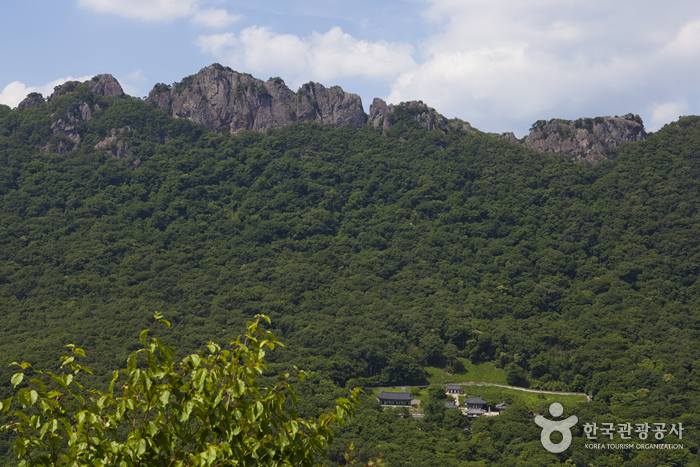

![Seonunsan Mountain [National Geopark] (선운산 (전북 서해안 국가지질공원))](http://tong.visitkorea.or.kr/cms/resource/64/2678864_image2_1.jpg)
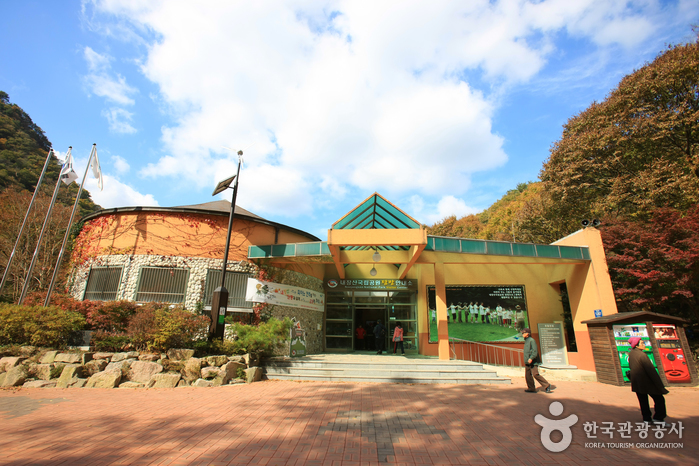
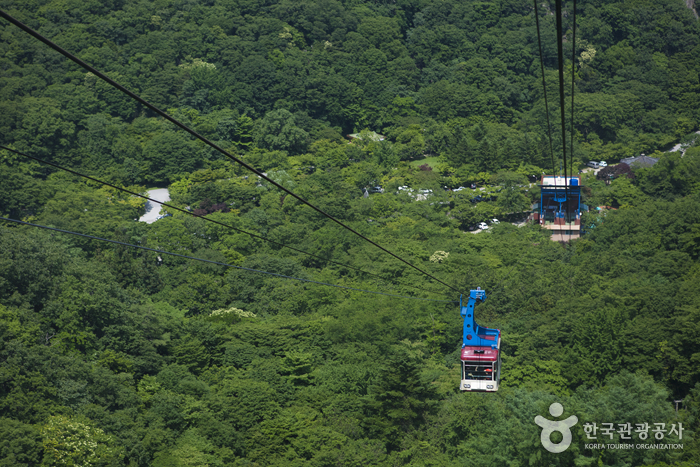
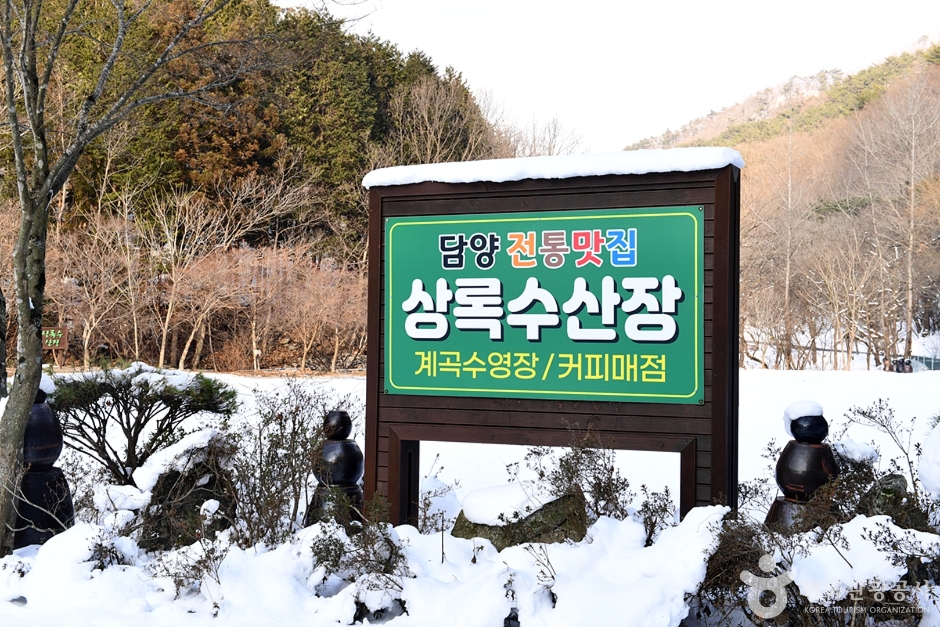
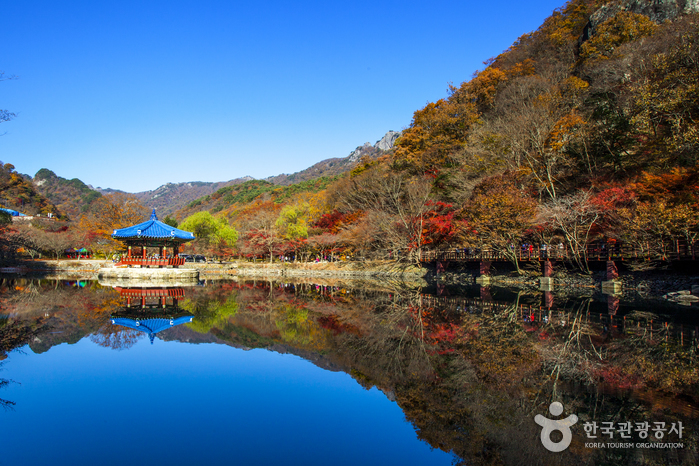
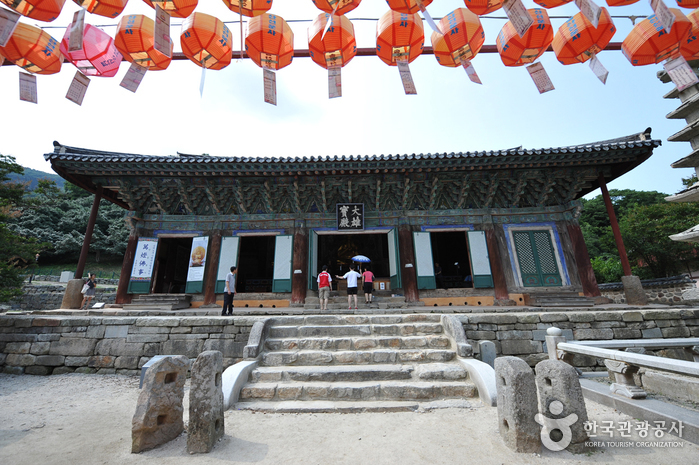
 English
English
 한국어
한국어 日本語
日本語 中文(简体)
中文(简体) Deutsch
Deutsch Français
Français Español
Español Русский
Русский